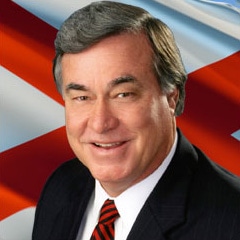You have an advantage over me because you know the results of Tuesday’s balloting and I do not because I had to go to press prior to Tuesday’s primary voting. However, today the big question is whether the February 5th voting winnowed out the field and gave us clear cut frontrunners?
Yesterday’s Mega Super Tuesday balloting consisted of 22 state primaries, including us, and was to be the waterloo of the presidential primary cavalcade. For many of us, this year is unlike any we have ever witnessed. It is the first presidential election year since 1952 where there is neither an incumbent president running nor a vice president waiting in the wings to move up the ladder. Therefore, it is the most open presidential race in over 56 years. Hence it is only fitting and proper that we have the most undecided race in history.
If the polling data prevailed and was accurate, we in Alabama had close races between John McCain and Mike Huckabee in the GOP primary and Barack Obama and Hillary Clinton on the Democratic side. McCain and Obama were favored to win in Alabama.
National polls seem to indicate that the Republican race is boiling down to a two man race between John McCain and Mitt Romney. On the Democratic side, Hillary Clinton’s presumed waltz toward her coronation as the Democratic standard bearer is seriously being challenged by a dynamic Barack Obama insurgence. The titanic struggle between Obama and Clinton may well be played out all the way to the Democratic convention in Denver this summer.
Many of you have questioned the accuracy of polling after the New Hampshire debacle. Indeed in the Granite State the pollsters were way off on the Democratic side. Although they nailed the Republican vote on the head, the Democratic projections were historically askew. The poll results from the Sunday before the Tuesday vote had Obama winning 41% to 28% over Clinton. However, the actual vote was Clinton 39% and Obama 37%.
In defense of the poll they also said that 40% of the voters were undecided. The media overlooked this important equation when reporting the horserace figures. In addition, New Hampshire has such an open primary process that independents can vote in either primary and they have same day registration. Therefore a person could be polled on Saturday and truthfully say to the pollster, “I am an unregistered Democrat,” but decide Tuesday to go to his local polling place, register to vote, and then vote in the Republican primary for John McCain.
Another flaw that has occurred in numerous races in recent years is that polling will miss the mark when an African American candidate is in the race. This is known as the Bradley effect. This theory is named after former Los Angeles Mayor Tom Bradley. Bradley was a popular African American mayor and running for Governor of California. Polling showed him with a handsome lead all the way up to Election Day. However, when the votes were counted he lost.
This theory espouses the political opinion that white voters will tell a pollster they are going to vote for an African American because they do not want to be perceived as a racist, when in actuality they will not vote for that candidate in the privacy of a voting booth. The Bradley theory has some plausibility. This theme has recurred repeatedly in races throughout the country in the past decade. The Doug Wilder race in Virginia and more recently the Harold Ford contest in Tennessee are examples of when polling prior to the election showed much higher projections than the reality of Election Day.
Regardless of how accurate the polling projections proved to be in yesterday’s primaries, it appears that the time has now come to start counting delegates. As the dust settles from the Mega Super Tuesday voting, after all the votes have been counted, how do these votes equate into actual delegates to the conventions when the nominees are actually selected? Each state has a different formula for allotment of their delegates. Some states allow for the winner of the primary to get all the delegates. However, most states are like us and apportion their delegates based on a percentage of the votes received in the primary. This is the fairest way in my opinion.
We will be weeding out the complicated calculations over the next few days and all the trudging through the snow in Iowa and New Hampshire for momentum and media exposure will be only memories. The new story will be who actually has the most delegates and then on with the show.

Steve Flowers
Alabama’s premier columnist and commentator, Steve has analyzed Alabama politics for national television audiences on CBS, PBS, ABC and the British Broadcasting Network. Steve has been an up close participant and observer of the Alabama political scene for more than 50 years and is generally considered the ultimate authority on Alabama politics and Alabama political history.